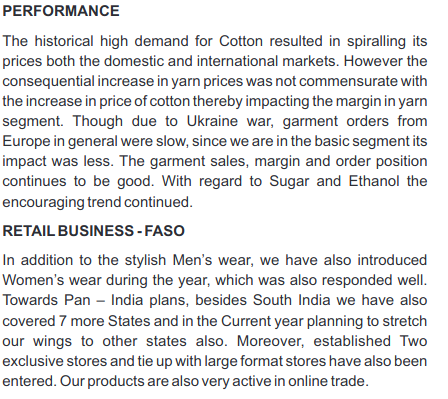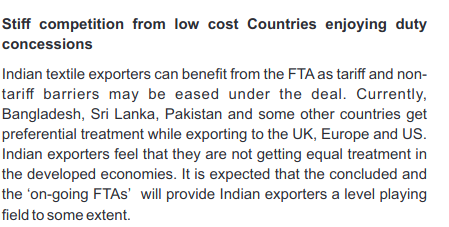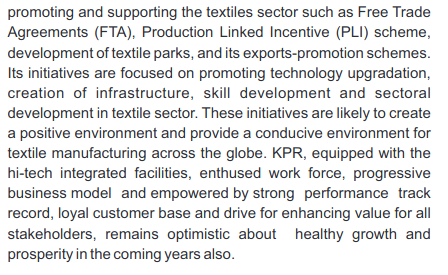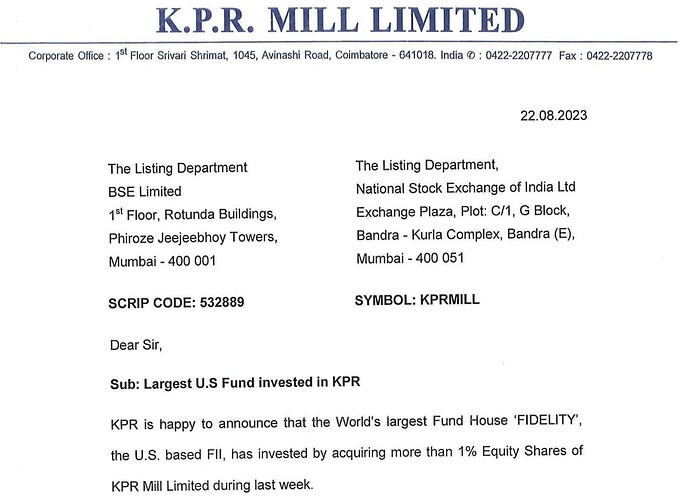Moneylife interview. Excellent interview and must watch.
Some of the outstanding CSR and employee welfare concepts too. This really excites me to think about this company.
"If you support the system for sometime, the system will support you for a lifetime,” - Mr P Natraj, MD
So on the back of the recent good results, the company’s board announced a buyback of 22,36,000 equity shares, for an aggregate amount not exceeding Rs 179.99 crore. The total buyback shares represent 9.53% of the total paid-up equity capital of the company. The buyback is proposed to be made at a price of Rs 805 per share. The buyback price is 16.72% premium to the current traded price.
Dumb question - I have never done a buy back before but this sounds like easy money to me. Is there a catch to this? I’ve read about the basic concept of buyback and I understand it. But are there limits to how much each retail investor can buy back? For someone like me, who doesn’t hold any shares as of now, does it make sense to buy some today and sell them during the buy back for 17% returns? What’s the flip side?
Hello,
Not all of the the shares you hold will be bought or be eligible for buyback. It could be around 1 share for 10 you hold. So the 17% you upside you expect would only be for around 10% of the shares you buy/hold.
I think this video is incorrect in its conclusion. The 1.65% is based on 2L value of paid up capital and not actual value of shares (based on CMP).
That information ia only available in the Annual report and my sense is 30-50% acceptance would definitely be possible.
Looks like the acceptance rate is 0.5%. Perhaps the lowest I have seen in a buyback.
Investor presentation april 2022
Few important points
1…2021 – New garment facility of 42
Million garments at Chengapalli,
Tirupur
2…2021 New 10,000 TCD Sugar
Facility 50 MW Co-Gen and 230
KLPD Ethanol
3…New subsidery at Singapore-To enlarge Export business
4…Strategic Investment in Wind Power Project 61.92 MW
• One of the largest Captive power generators in Textile Industry
• Invested in eco-friendly Wind Mills at Tirunelveli, Tenkasi, Theni & Coimbatore Districts in Tamil Nadu,
India
• Total Wind Power Capacity 61.92 MW
• 60% of Textile power requirement met through wind power
5…One of the largest vertically integrated textile player with presence across the entire value chain - from “fibre to fashion”
6…Best quality cotton ‘Shankar 6’ used as the raw material for consistent quality
7…Garment
With 115 million Knitted Garments capacity, KPR has become one of the largest Apparel Manufacturers in India. Established New
Garment facility with a capacity to produce 42 Million knitted garments per annum, ramping up is in progress.
8…Yarn
One of the largest yarn
manufacturers in India
• Entire yarn capacity upgraded to
value added yarn
9… Sugar
Expansion of Sugar, Co-gen and Ethanol production capacity with 10,000 TCD, 50 MW and 230 KLPD
10…Eco-friendly Processing facility and sophisticated high resolution printing facility
11…Marquee relationships with more than 1,200 regular domestic clients for yarn and fabric and around 60 Countries for garments
12…Quality initiatives and consistent technology up-gradation secured several International Accreditations
Disc…invested
How can it be so low? Buy back was for 22,36,000 shares, roughly 9.53% of paid up capital. So acceptance ratio should be minimum 9.53%. For retail investors, it should be minimum 30% as everyone is not participating. In fact I missed out this opportunity.
Rs 1 lakh invested in KPR Mills 11 yrs back would be Rs 6 crores now! In the hindsight, I did not invested in this labelling textile as commoditized and China/Bangladesh threat, but I am still flabbergasted to know the multibagger returns such stocks give.
Q3Fy23.pdf (525.8 KB)
Quarterly result Update: Q3FY23:
1)The company recorded a total turnover of Rs 1431.4 crores in Q3FY23 as
compared to Rs1259.1 crores for the corresponding quarter of the previous
year. This is a growth of 13.7% Y-o-Y and 17.3% Q-o-Q.
-
The Net profit stands at Rs 174.6 crores as compared to Rs 211.8 crores last
year. This is a decrease of around 17.6% Y-o-Y and on Q-o-Q basis, there is a
decrease of 14.1%. -
The EBITDA is Rs 281.9 crores as compared to Rs 330.6 last year.
-
The OPM remained at 19% as compared to 26% in the previous quarter and 24%
in the previous year.
Concall Update:
Capex Announcements:
-
The company has announced the expansion of ethanol capacity in K.P.R sugar mills Ltd.
They have proposed to increase the ethanol capacity from 130 KLPD to 250 KLPD at
the cost of Rs 150 Crores. The project will be funded through internal accruals and
term loans and is also eligible for interest subsidy under the ethanol augmentation
scheme. The project is expected to complete by 2023-24. -
Vortex spinning mill: The Company plans to set up a vortex spinning mill for viscose
yarn production with an estimated project cost of Rs 100 Crores. The project is
expected to be complete by the financial year 2024 and the entire project cost will be
funded through internal accruals. -
Solar power plant: The Company plans to set up a 12-megawatt solar power plant
for captive consumption with a total cost of about Rs.50 Crores. This project cost
will be met through internal accruals. The project is expected to complete this year
which is 2023. -
The expansion of projects under the printing division. The company plans to increase
the production capacity of its processing and printing by debottlenecking the
process, which will increase production by about 20%. The total project cost of
Rs.50 Crores will be met through internal accruals.
5)The company has an order book of Rs 1000 crores for garments
.
6) There is no issue on the demand side as far as garments are concerned. The prices of
cotton is fluctuating which has affected the margins.
- The management has guided that due to capex, in the sugar division, there would be
an increase in revenue of about 50 Crores because the sugar will be converted into ethanol
and the revenue of about 100 Crores from 2024, 2025 onwards because it will be
completed in 2024 only. The solar power plant will give a cash saving of around 12 Crore
per annum and the processing division capacity will increase by 20%. It will be internally
consumed.
8)Garment production will be at full capacity from next year onwards. The company is
expanding in other businesses but as far as the garment is concerned, it will be only done
once the macro situations are stabilized.
- Due to the volatility in cotton prices, the company is planning to keep cotton stock
as low as possible. Currently, the stock is for 2 months.
10)The ethanol plant has been fully utilized in the current quarter. The first and second
quarters are off-season for sugar and the third and fourth quarters are good seasons.
- As far as FASO is concerned, the demand for the same is ramping up, and the company
is planning to reach a breakeven level in 2023-24.
Attaching the concall transcipt with important points highlighted.
Hi,
Can anyone help me with their garment business margins?
In Q4FY23 Concall, management mentioned, 25% OPM margins for Garments. Gokaldas who is its peer in garments, has OPM of 12%. Why their is huge difference in margins of these two companies?
It will be very helpful if @basumallick or @hitesh2710 or @Worldlywiseinvestors can shed some lights on this.
some quick notes:
From AR-2023 (from a quick scan, not comprehensive)
from directors report
from Management discussion

Expansion plans

Competition from other countries

Growth prospectus:

Q1 Results:
Profit growth, Margins etc shrunk
share holding in June 23:
FII - reduced marginally, DII - 14.56 to 14.71 increase. Retail - reduced marginally.
Stock trading near 50 DMA and will watch the market reaction
Disc: Invested close to 2%. I am not a SEBI registered and I can exit my positions without informing this forum.
Gokaldas is primarily into woven garments ( for sake of simplicity, assume “shirts”).
KPR is primarily into knit garments ( for sake of simplicity, assume " Tee shirts")
Tee shirts manufacturing turnaround time is faster than shirts & KPR with inhouse labour is optimized to do double shifts and extract plant efficiency.
Tailor wages in Karnataka (Gokaldas) is more than that of tamilnadu (KPR) according to minimum wages Act, 1948 which both states adhere to. Power costs are slightly higher too in KN
Gokaldas further expansions are happening in Madhyapradesh to tap into low cost labour and power.
KPR is vertically integrated (yarn → Cotton) hence wastage, pilferage, processing loss are minimized.
Hope this introduction helps, happy to entertain any further specific queries
KPR mills expansion plans
Disc: invested
Kpr mill update(credit rating 2023, concall and investor presentation)
1…KEY STRENGTHS
A…Vertically integrated textile mill
KPR is one of the largest vertically integrated companies with presence across the textile chain value from manufacturing of cotton
yarn to processed fabric to garments which imparts strong operational flexibility.
=The product range comprises readymade knitted
apparel, fabrics, compact, melange, carded, polyester and combed yarn.
= Under the garment division, the company manufactures
knitted garments for men, ladies and children wear, which includes casual wear t-shirts, nightwear,
B…Poximity to ‘Tirupur’-
Asia’s largest Knitwear
premium Cluste
C…Best quality cotton
‘Shankar 6’ used for
consistent quality
D…Integrated Sugar, Co-gen and Ethanol production capacity
2…Based on the discussion with the management, CARE Ratings expects garment segment’s contribution is expected to gradually increase to 50% from the current 39%.
3…Low vulnerability of operating margin to volatility in cotton prices
=The profitability of spinning mills depends largely on the prices of cotton and cotton yarn which are governed by various factors such as area under cultivation, monsoon, international demand-supply situation, etc.
=The cotton being the major raw material of spinning mills, movement in cotton prices without parallel movement in yarn prices impact the profitability of the spinning mills.
=The cotton textile industry is inherently prone to the volatility in cotton and yarn prices.
=However, though there is wide fluctuation in cotton prices over the years nevertheless,
A…Prudent and pragmatic cotton procurement strategies and availability of exclusive personnel in the cotton growing areas, has enabled KPR access to quality cotton at a competitive price, thereby protecting its margins.
B…KPR is an integrated Apparel Unit, the impact of higher cost of raw material on its performance is minimal as the additional cost is shouldered by the resultant products.
4…Capex
=Invested in growth initiatives such as vortex spinning mill, processing and printing expansion, rooftop solar plant, and ethanol capacity expansion.
= We will wait for market conditions to improve and will plan further capex.
=Assessing future capex based on availability of sugarcane and molasses for ethanol production.
Disc…invested from lower level
How do you deal with the rise in valuations over the years…
I have read not sell a stock just because its price is rising, but holding stocks with rising valuation metrices in the face of mid cap meltdown is not an easy ride.
thankfully its ROCE metric has also improved in these years but not sure if its commensurate and sustainable and so keep having doubts if should switch to something like an Ambika Cotton with much lower valuations…







